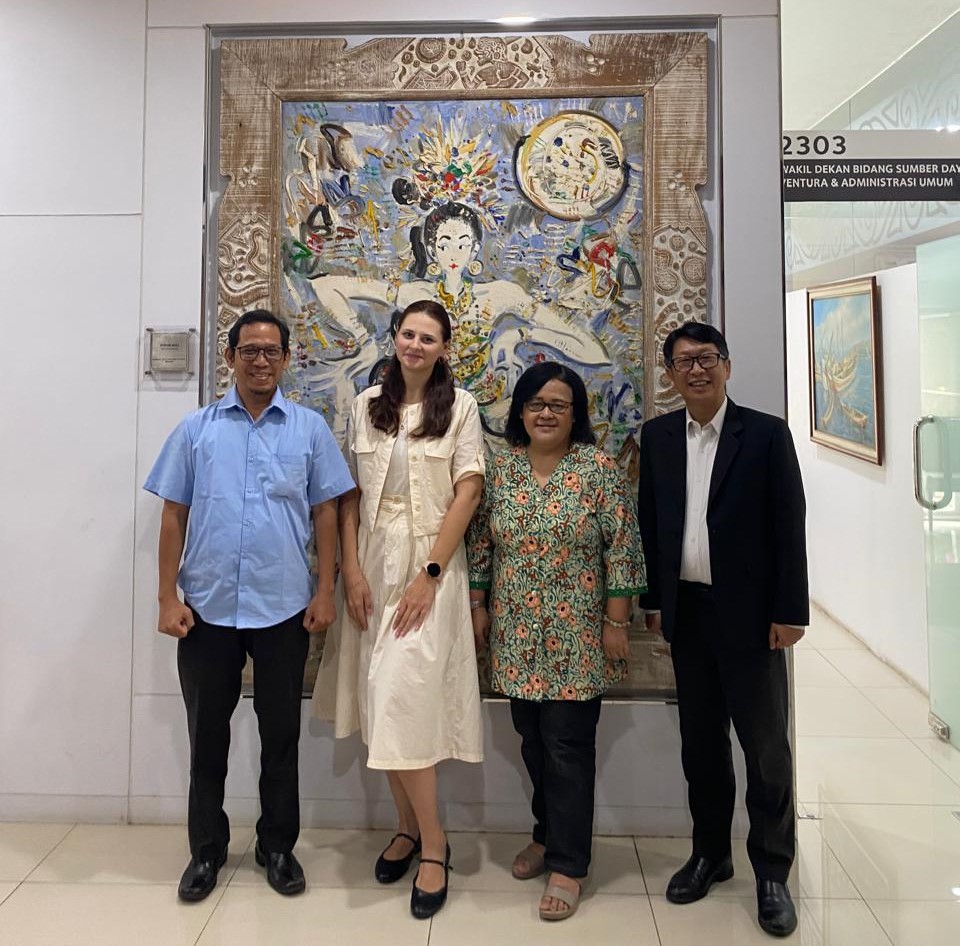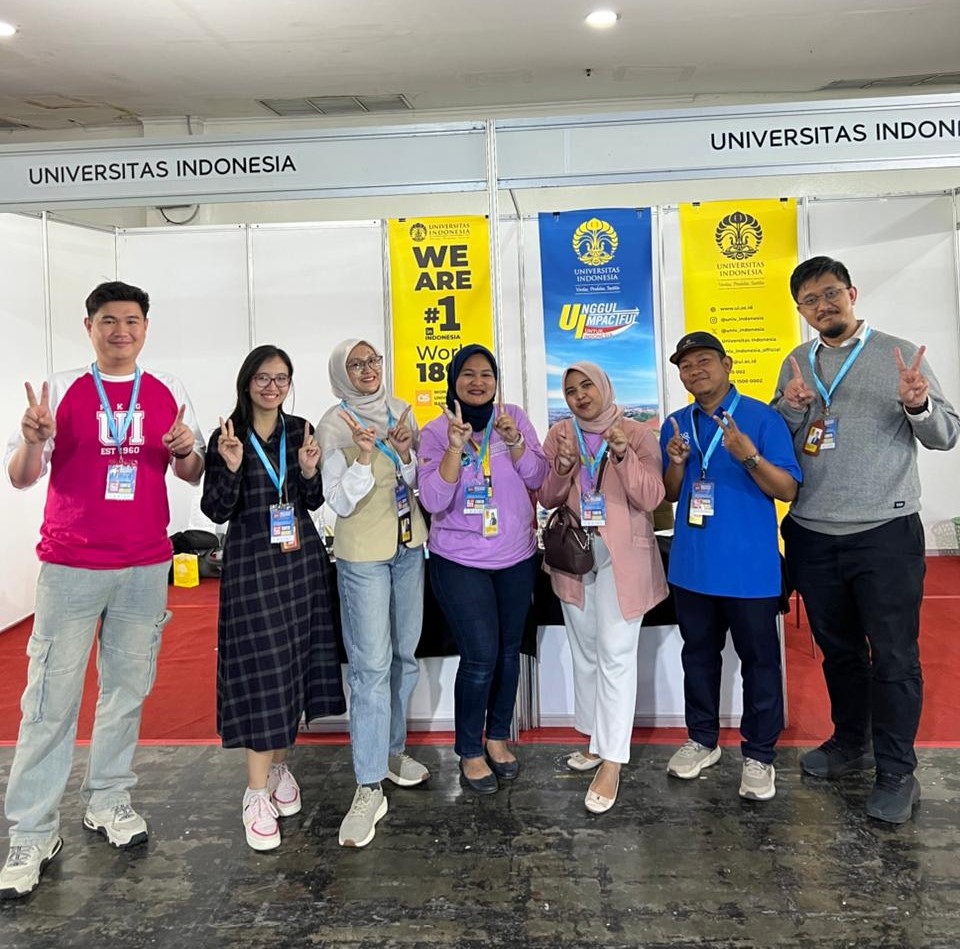The Faculty of Humanities Universitas Indonesia (FIB UI) renaming ten buildings, four auditoriums, and one prayer room (musala) as a form of appreciation for figures who have made extraordinary contributions to the development of the field of humanities in Indonesia. The inauguration took place in the middle of a the opening ceremony of 2025 induction week and was led directly by the Dean of FIB UI, Dr. Bondan Kanumoyoso, S.S., M. Hum.
The naming was decided through a deliberative process involving the three main organs of the faculty-the Dean, the Faculty Board of Professors, and the Faculty Academic Senate-as well as all departments within FIB UI. This ensures that each name reflects dedication, achievement, and exemplary work in academia and contributions to the nation.
The ten buildings, 4 auditoriums and 1 musala that now officially bear the names of these figures are listed as follows:
Building 1 – R.M.Ng. Poerbatjaraka
Raden Mas Ngabehi Poerbatjaraka was an expert on Ancient Java, Middle Java, and New Java manuscripts who emphasized scientific methods in text editing and interpretation. His works paved the way for more systematic manuscript research that became a reference for the next generation of academics.
Building 2 – Achadiati Ikram
Achadiati Ikram is a professor of philology who plays a major role in research, preservation of classical manuscripts, and development of Malay and Indonesian literary studies. She is the founder of the Nusantara Manuscript Society (Manassa) and served as Dean from 1989-1995 when the Faculty of Humanities UI was still called the Faculty of Letters UI.
Building 3 – Harsja Wardhana Bachtiar
Harsja Wardhana Bachtiar is a professor of social anthropology who introduced the modern scientific approach to the study of Indonesian society. He was also the Dean of the UI Faculty of Letters from 1969-1975.
Building 4 – Hoesein Djajadiningrat
Hoesein Djajadiningrat is a pioneering historian who combines Dutch and local sources in reconstructing the history of the archipelago, especially the history of Banten.
Building 5 – R. Soekmono
- Soekmono was a pioneering archaeologist who formulated modern archaeological research methods in Indonesia and introduced the study of temple culture history.
Building 6 – R.Z. Leirissa
R.Z. Leirissa is a professor of history who promotes the history of Maluku and eastern Indonesia, enriching national historiography.
Building 7 – Anton M. Moeliono
Anton M. Moeliono is a professor of linguistics who actively led the standardization of the Indonesian language, including the formulation of the Perfected Spelling (Ejaan yang Disempurnakan) and the preparation of standard Indonesian grammar. He led the UI’s Faculty of Letters as the Chairman of the Presidium in 1966-1967.
Building 8 – Lily Koeshartini S.
Lily Koeshartini S. is a major pioneer of library science education and development in Indonesia.
Building 9 – Sapardi Djoko Damono
Sapardi Djoko Damono is a professor of literature and a proud Indonesian writer whose works changed the face of modern Indonesian poetry and inspired generations of readers. He was also the Dean of the Faculty of Letters from 1995-1999.
Building 10 – Koentjaraningrat
Koentjaraningrat is the father of Indonesian anthropology who built the foundation of cultural studies in Indonesia and is widely recognized internationally. Discussing the definition of “culture” must involve the definition of what culture is from his thoughts. He was the Dean of the Faculty of Letters in 1966.
Auditorium Building 1 – Toety Herati Noerhadi
Toeti Herati is a professor of philosophy who pioneered the development of academic philosophy in Indonesia, as well as an important figure in strengthening the academic policy direction of the UI Faculty of Letters in her time.
Auditorium Building 4 – Tjan Tjoe Som
Tjan Tjoe Som was the first to introduce the study of classical and modern sinology in Indonesia and mentored the first generation of sinologists in the country. He was the Dean of the Faculty of Letters UI from 1956 to 1961.
Auditorium Building 9 – Soe Hok Gie
Soe Hok Gie was not a professor. However, his contribution is always imprinted in the soul of every FIB UI resident. He is a young historian, who is also a symbol of academic courage and intellectual integrity.
Auditorium Building 10 – Benny H. Hoed
Benny Hoedoro Hoed is a semiotics expert who developed the study of meaning, signs, and cultural communication in Indonesia within an interdisciplinary paradigm. He is also a developer of institutional concepts that develop foreign language competency services and Indonesian studies.
Finally, the FIB UI musala is named as Musala Fatahillah. The name Fatahillah is taken from the name of the historical figure who led the seizure of Jayakarta from the invaders, a symbol of firmness and courage.
The Dean of FIB UI emphasized that this naming is not just a formality, but a reminder that intellectual heritage is the foundation of civilization. He hopes that the exemplary values, dedication, and enthusiasm of these figures will continue to inspire all FIB UI residents in carrying out the tridharma of higher education. This message was delivered in front of 999 new undergraduate students of FIB UI on Wednesday, August 13, 2025.
Head of the Faculty Senate, Prof. Mina Elfira, S.S., M.A., Ph.D. added that this initiative also serves as an educational tool for students and the wider community. “The names of the figures that are now attached to the building and auditorium are not only location markers, but also entrances to recognize their history and contributions. It is also a form of respect and love from students to their teachers for the manners and knowledge they have taught. That way, the new generation can emulate their integrity, hard work and scientific spirit,” she said.
Meanwhile, the secretary of the Board of Professors of FIB UI, Prof. Dr. R. Tuty Nur Mutia expressed her appreciation for this step. She emphasized that the majority of the selected names are professors who have made great contributions to the development of cultural science. All of them are not only our teachers at FIB UI, but can also be called ‘Guru Bangsa’ (teacher of the nation). “This naming preserves our collective memory of the services of our predecessors. Every time the names are mentioned, we not only designate a space, but also revive the values of scholarship, courage, and devotion that they have passed on to FIB UI and Indonesia,” she said.
With this inauguration, FIB UI affirms its commitment to preserving and developing the heritage of cultural knowledge, while instilling pride in the younger generation of the nation’s history and academic achievements.




